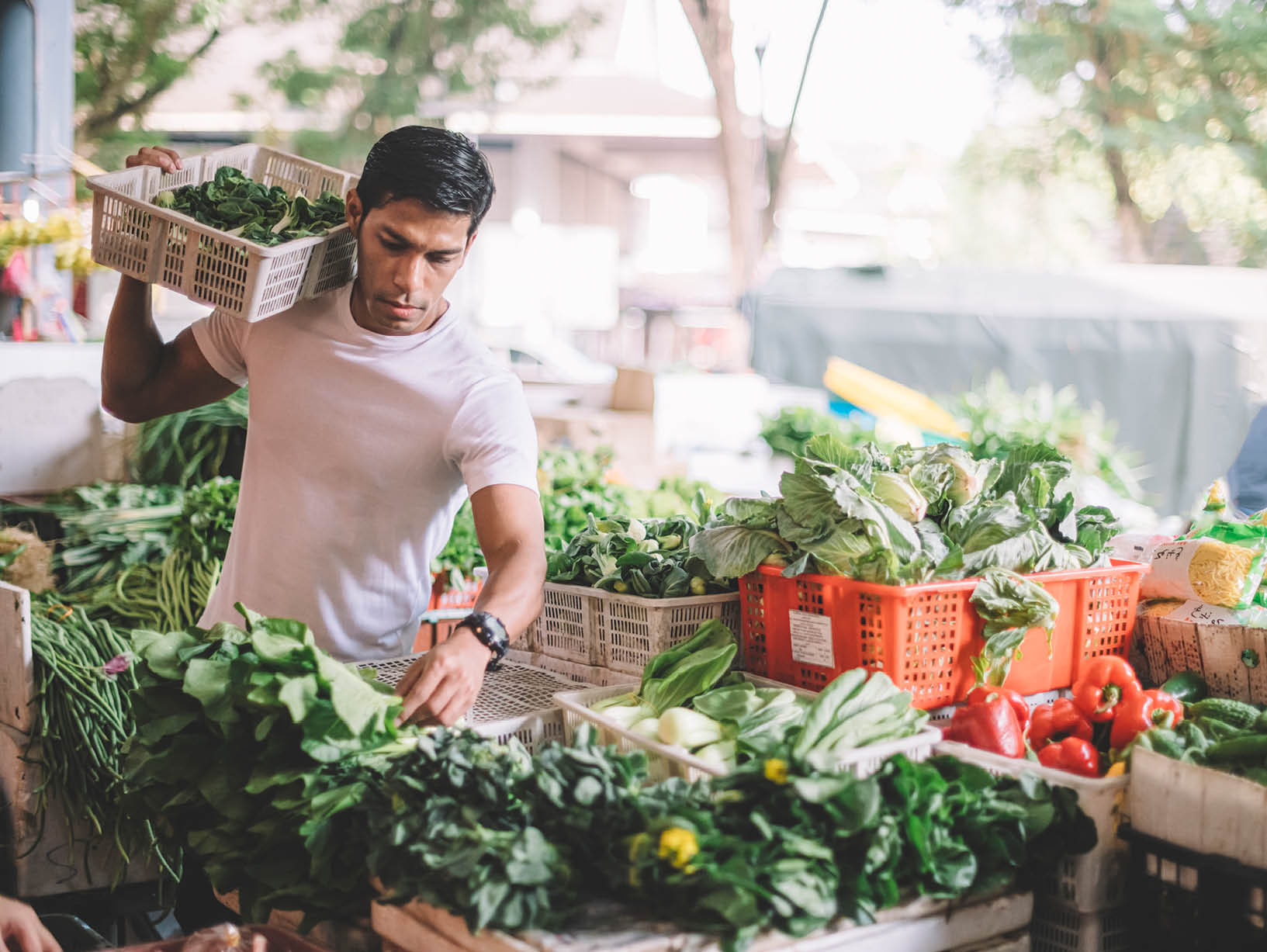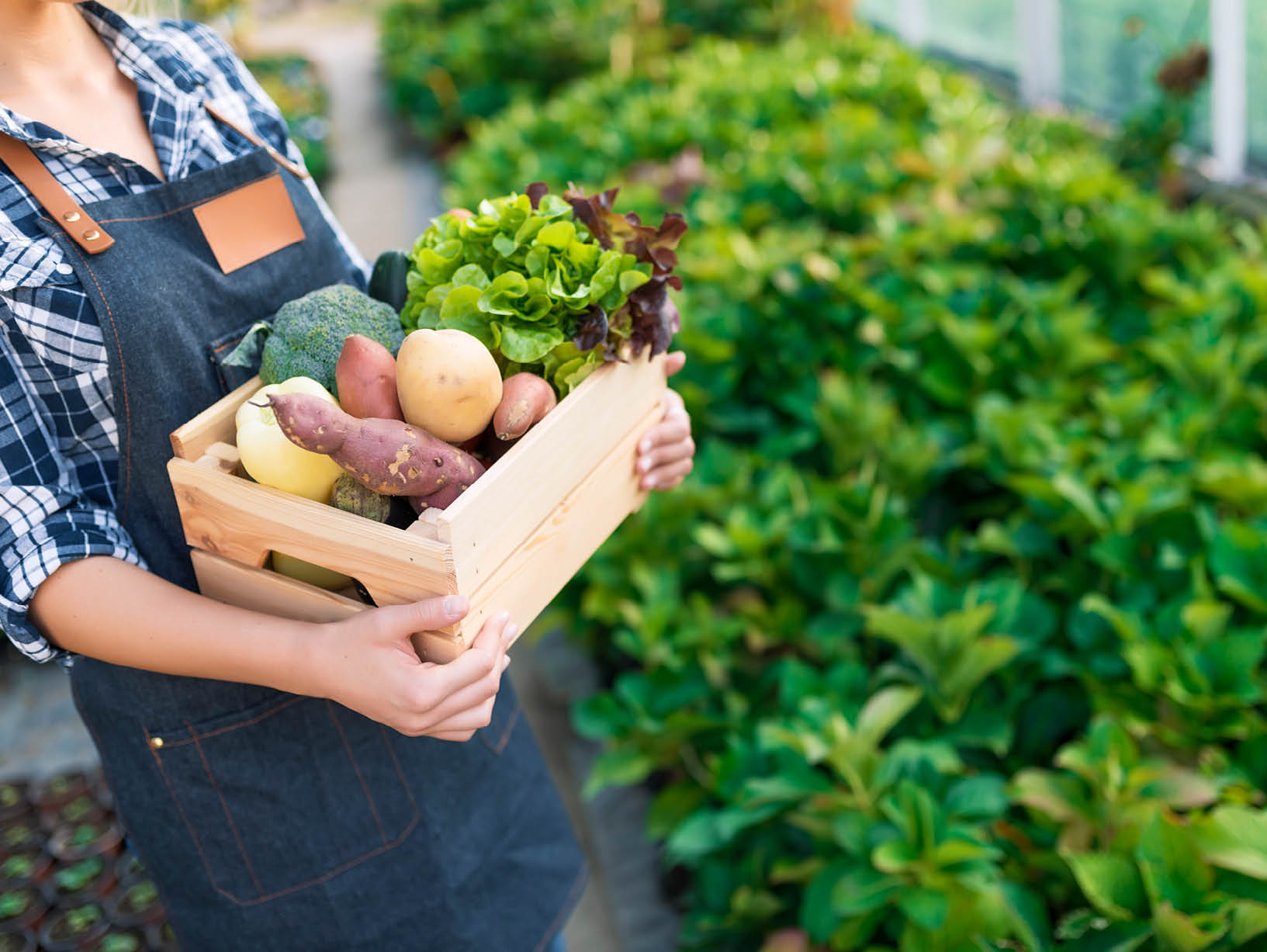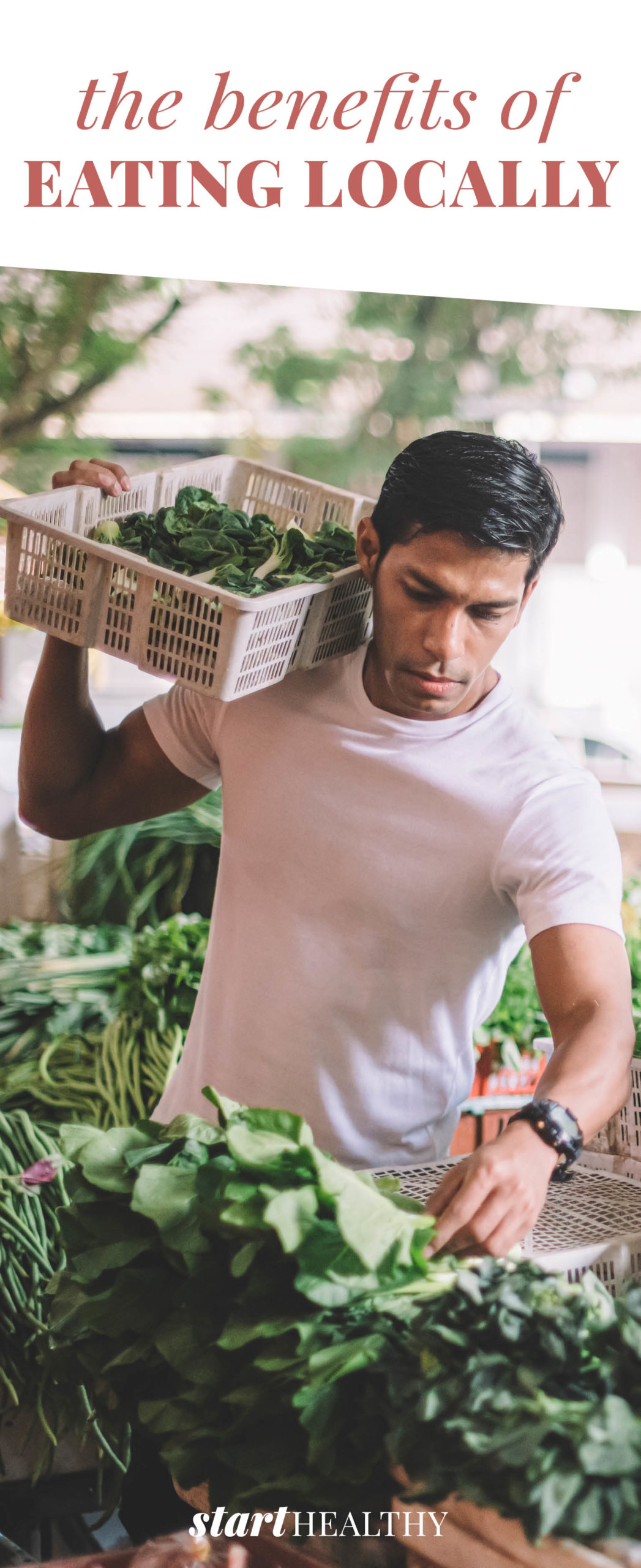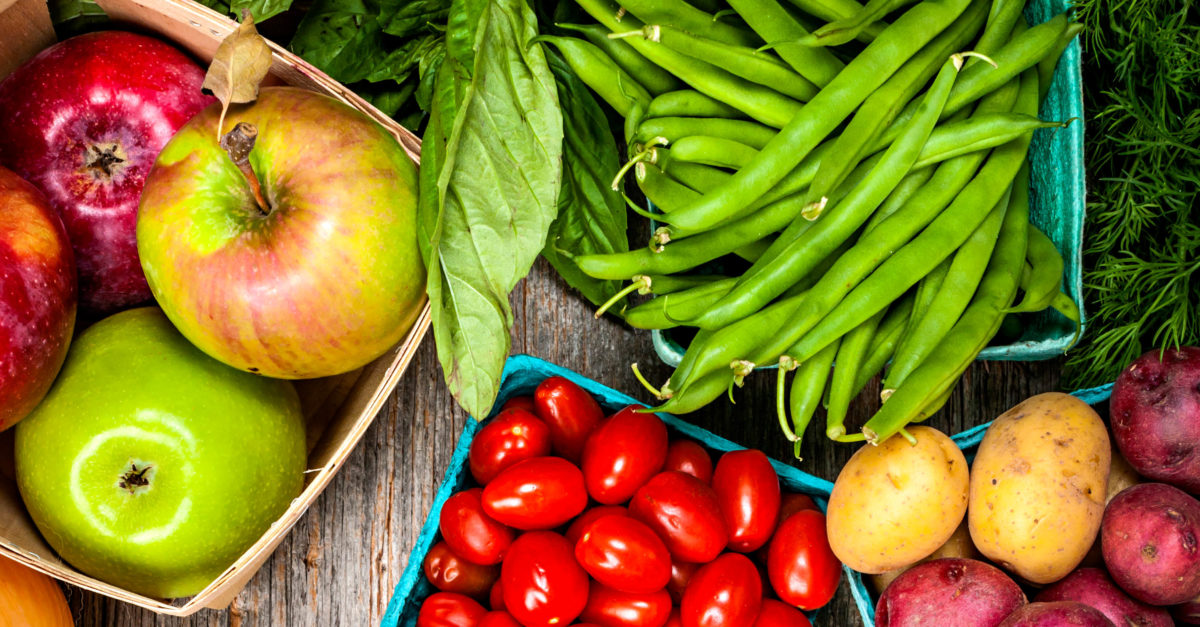The Benefits of Eating Locally
Not too long ago, the world was made up of agrarian societies. Most people lived on, or near, a farm. They grew food themselves or purchased it from a neighbor. This resulted in a diet made up exclusively of what could be found or grown in their own backyard, which, in many cases, depended on factors like the time of year and weather conditions.

Fast-forward to today, and the way we acquire and even think about food is vastly different. A mom living in Michigan can buy a banana to put in her child’s lunch box, and a couple dining at a restaurant in landlocked Kansas can enjoy a lobster dinner. The foods we eat are no longer dependent on our location or the season. While there are benefits to this expansion of the food market—for example, increased access to fruits and vegetables that are difficult to grow in an urban environment—there are also some negatives.
So it begs this question: How can the average person find a balance between eating a diverse array of fruits, vegetables, grains, and other whole foods without contributing to the cycle of mass food transportation? The answer lies in thinking old school and prioritizing your consumption of locally sourced foods.

Where should I shop?
“So much of the confusion in the world of nutrition is linked to how disconnected we are from our food,” says Stephanie Kay, a registered holistic nutritionist and author of Red’s 5-Ingredient Meals and Bistro Box Cookbook. “Shopping local not only helps you reconnect with your food but also inherently gives you the right nutrients at the right time of year, just because Mother Nature kind of works that way.”
One of the best ways to do this is by shopping at a farmers market, where local vendors sell foods that were likely grown, raised, harvested, or baked nearby. If you don’t have access to a farmers market, many grocers, both national chains and mom-and-pop stores, will often advertise locally grown products and highlight in-season produce via signage and special sales.
If you live in a location with limited access to locally sourced goods, you can make less-frequent trips to the closest market or store that sells locally grown food, stock up, and preserve anything you don’t eat right away. “People are super skeptical about freezing food because there’s this myth that it diminishes the nutritional value, but it actually doesn’t in any aspect; it’s simply a method of preservation,” says Kay. Aside from freezing, other methods of preservation for both fruits and vegetables include pickling, canning, and drying, all of which can help you enjoy your locally grown foods longer. As a bonus, pickling or fermenting foods creates an abundance of probiotics—an added health benefit for your gut!

What should I buy?
When it comes to what you should be buying locally, produce is an obvious place to start. A quick internet search can tell you about your area’s growing season and what is likely to be available near you during certain times of the year. If you live in the Northeast, for example, carrots, cabbage, and broccoli grow abundantly in June through fall. In the Southwest, tomatoes, beans, and peppers are hardy enough to withstand the region’s hot, dry summers.
Try not to overthink it. Your farmers market will likely only carry what is in season, so shop with an open mind. If you always gravitate toward certain fruits and vegetables, ask your local farmer or grocer what they recommend this time of year. And if you’re looking to get creative, try experimenting with new ways of preparing old favorites. “We can get stuck thinking, ‘When I make pasta, it has to have this type of noodle and tomatoes.’ Maybe you can find a way to incorporate something new, like asparagus, and a couple of months later find a way to incorporate squash or pumpkin. You’re still using pasta as your base. Just alter what you’re adding to it to include what’s in season,” Kay suggests.
Although produce is often the easiest local-eating route to take, it doesn’t have to be the only one. Educate yourself on what other types of local food businesses are around you. For instance, perhaps there is a cheese shop nearby that sells cheese made from locally sourced milk or a butcher that supplies only locally raised beef or pork. You can commit to shopping local for the majority of what you eat if you’re strategic about it.

Who benefits from eating locally?
First and foremost, eating locally benefits you, the consumer, in a handful of ways. Your health benefits because you are fueling your body with fresh, wholesome foods that generally have a higher nutrient content since they are picked and consumed within a short time frame. When you eat what’s in season near you, you don’t have to worry so much about the quality and integrity of the products you’re buying. Eating locally and seasonally also means you’re consuming the different nutrients you need at different times of the year. For example, hearty foods like chard and root vegetables grow best in winter and are full of nutrients, such as vitamin D, that your body needs more of when there’s less sun. Refreshing, water-dense fruits like watermelon and squash grow well in summer, when you need to replenish your body’s water supply more quickly.
In addition to boosting your own health, eating locally boosts the health of your local economy. When you buy goods that need to be shipped from across the country or from overseas, your dollars don’t always go back into your community. However, when you shop locally, you’re supporting local farmers and artisans who are your friends and neighbors and are helping to ensure the economy in your area thrives.
Finally, eating and buying locally has a big impact on the health of the environment. The food production industry is a huge contributor to the threat of environmental pollution. Most of the foods we buy have to travel more than 1,000 miles to get to our local grocery stores, and the trucks, planes, and trains they are shipped on don’t often run on clean energy. So instead of buying a particular variety of apple that is shipped in from France, look for a variety grown in your area, or, at the very least, in your state. This will help cut wasteful transportation and lower your carbon footprint.
Eating locally may seem daunting if it’s not something you’re used to. But it doesn’t have to be as challenging as it seems. Read labels, make good choices, and ask questions if you’re unsure of where your food came from—everyone will benefit, including you.









